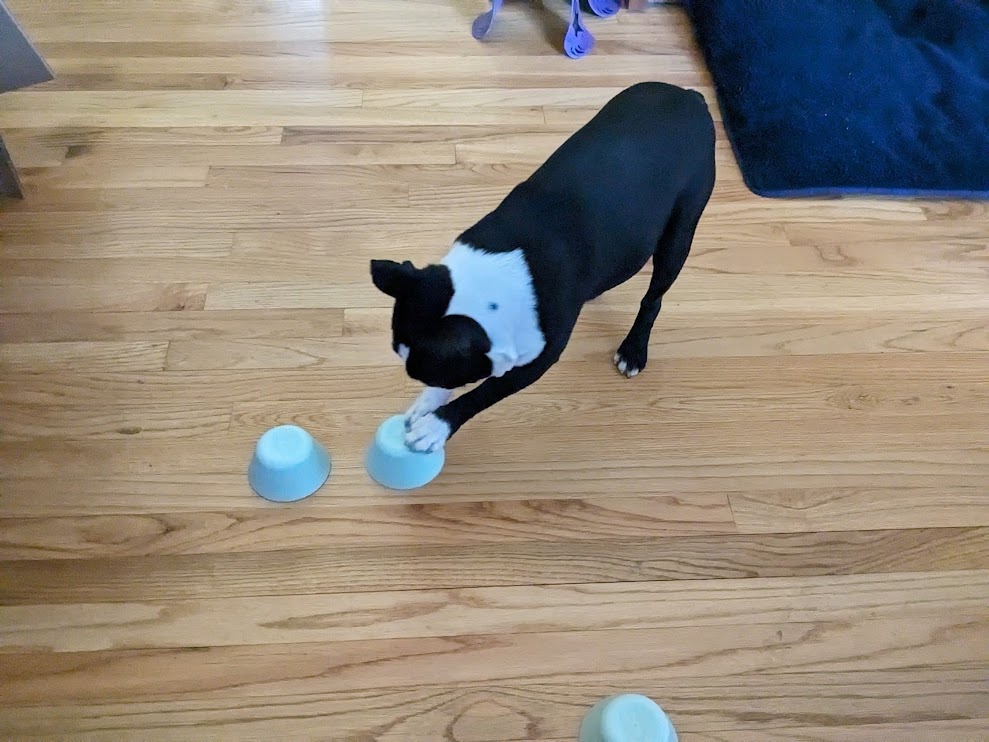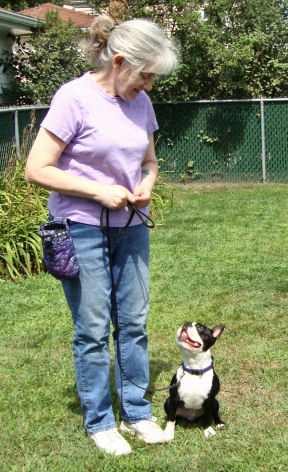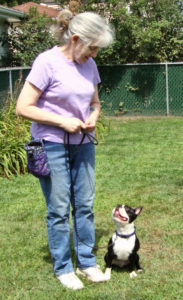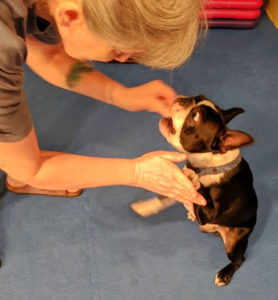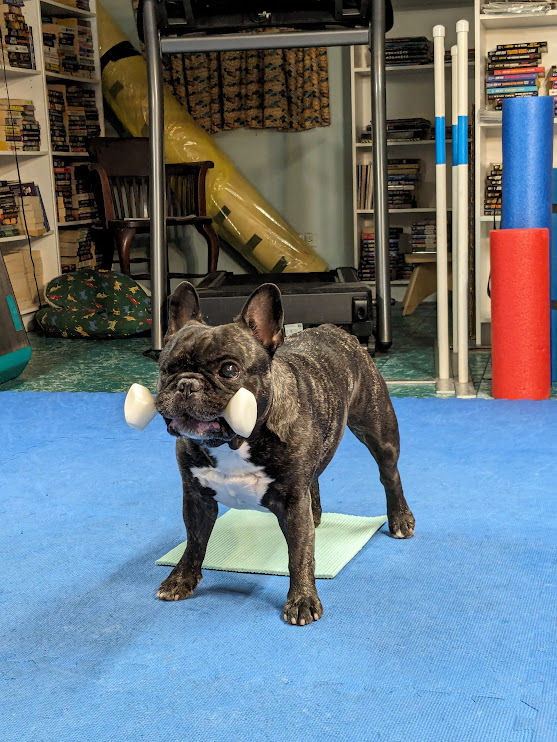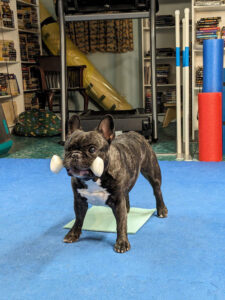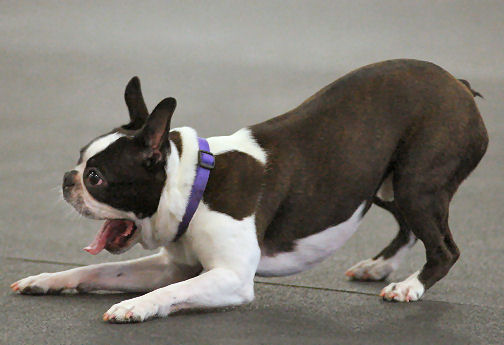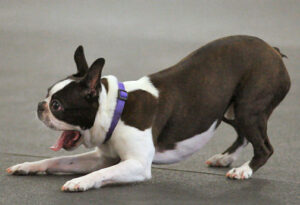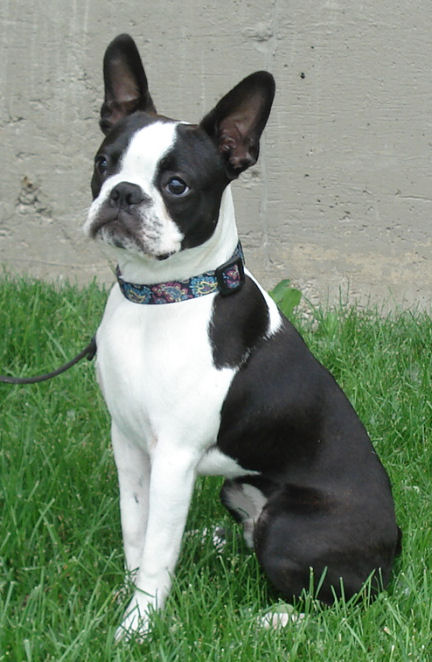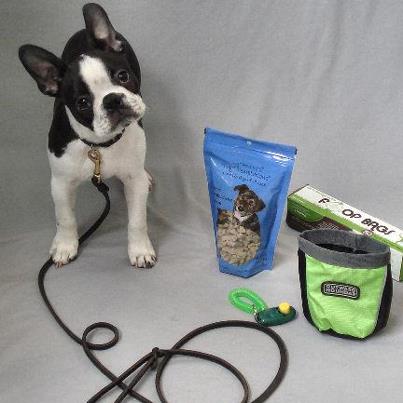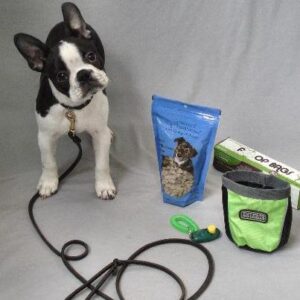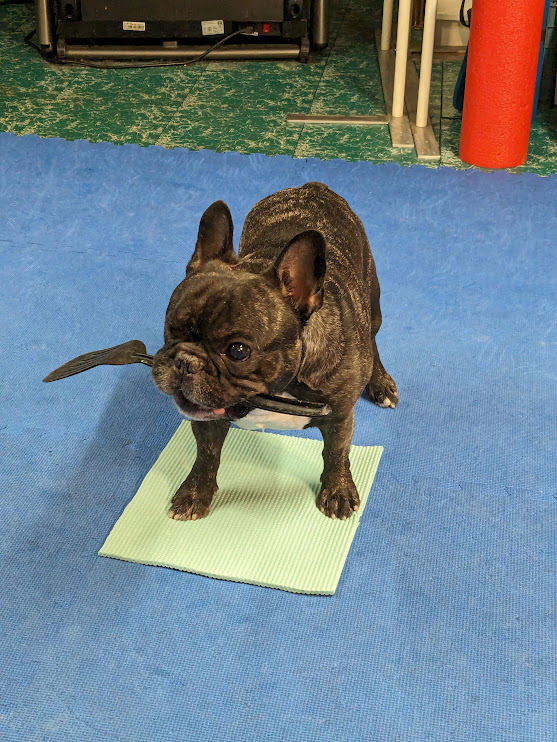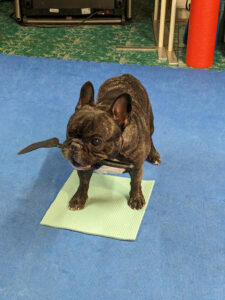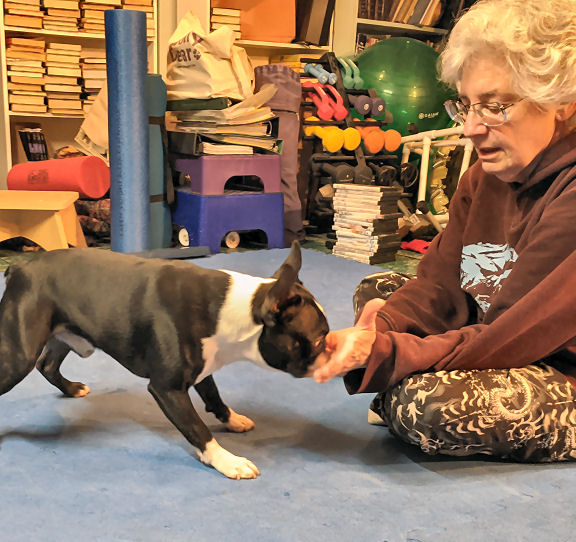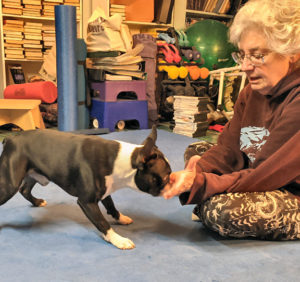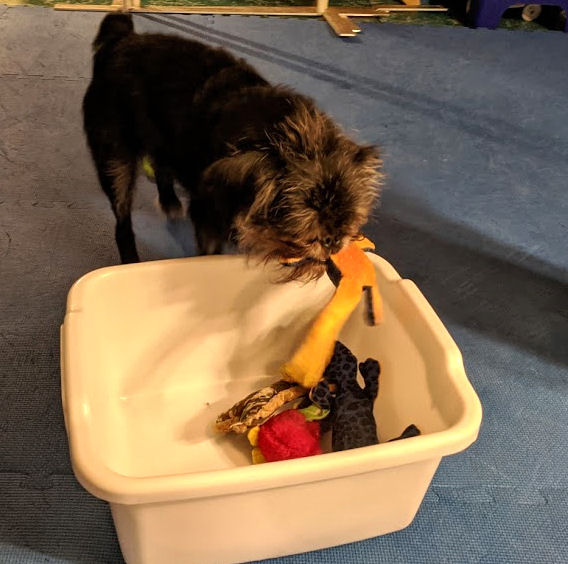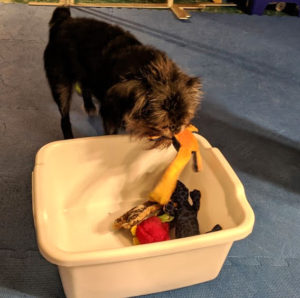Both you and your dog always win when you play the Dog’s Shell Game. It looks like the con-artist’s street corner version, but it doesn’t cost a thing.
This isn’t a training game per se. It’s just a fun game to play with your dog that lets them use their natural ability to sniff. It’s a game that lets your dog just be a dog, and you go along for the ride.
How to play
All you need is some rather smelly treats and three cups or little bowls. We’d recommend using ones that aren’t breakable. And are washable. Because dog spit.
You can play anywhere you have enough space to sit on the floor with your dog.
Start by letting your dog sniff the treat. Then line up your cups or bowls and hide the treat under one of them. It’s perfectly okay for your dog to see what you’re doing.
Leaving the bowls flat on the floor, shift them around a few times in random order. The beauty part of this game is you don’t have to remember where the treat is. It’s up to your dog to find it.
Find it!
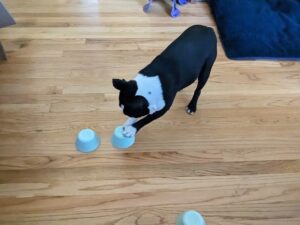
Then just let your dog go find the treat. They should use their noses to locate it. If they knock over the cup, that’s fine. Some dogs don’t make a beeline to the treat because they may not understand it’s a sniffing game.
When they indicate which bowl, pick it up and let them get the treat if they were right. If they chose poorly, just say something like “That’s not it! Keep trying!” It’s up to you whether you set that bowl aside or reintroduce it into the game.
Do it again!
After they find the treat the first time, they’ll know better what the game is about. It’s fun when they catch on and sit watching you move the cups around. See if your dog watches the target bowl or the whole set up. If they watch a single bowl, they’ll probably go right to that one when you release them.
Once your dog knows how to play the game, you can replace the treat with anything that has a scent. If you’re into Nose Work, you’re familiar with having dogs sniff out the essential oil scents used in the sport. You can use a cotton pad with just a few drops of scent. Just be ready with a treat to reward your dog so they’re not tempted to eat the cotton pad.
No fooling
Unlike the con artist, you’re not trying to fool your dog. You want them to succeed by using their natural scenting ability, like the “Find It!” dog training game. On a sniffari walk, your dog meanders from place to place, checking out the surrounding odors. The Shell Game has the added benefit of making you a vital part. Whenever possible, you want to be included in your dog’s fun.

